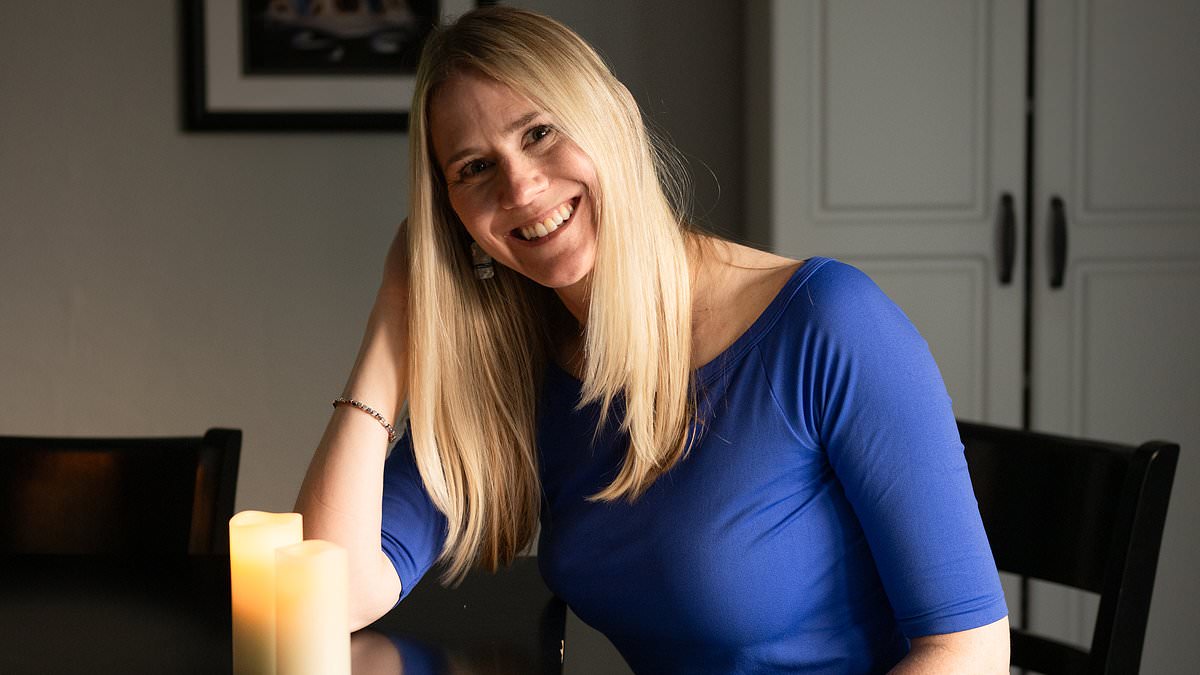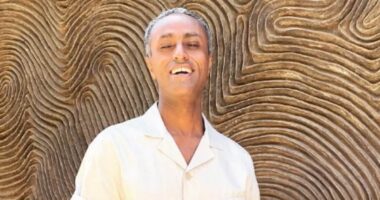Down and down I went, into a concrete stairwell, four-and-a-half flights below ground. The sunlit sky above soon became a miniature rectangle over me, until I stood facing a steel blue door.
Behind it, to the right, a long tunnel led to a silo that once held a Titan II intercontinental ballistic missile with a nine-megaton nuclear warhead.
I walked left, through another metal door and a shorter tunnel before I arrived in the deep, windowless space that would be my home for the next ten nights: a decommissioned US nuclear launch control centre, now remodelled into a rather eccentric Airbnb destination.
Why, you might wonder, had I chosen to holiday entirely underground, far beneath the Arkansas countryside? As a science journalist, I had become fascinated by a growing branch of medicine dedicated to exploring the effect of our inner biological clocks – otherwise known as our circadian rhythms – on our bodies and minds. This peculiar holiday of mine, deep in the bowels of the Earth, in a space with zero natural light, was to form part of my research.

Science writer Lynne Peeples spent ten days in a nuclear bunker with no clocks or daylight
At this very moment, your circadian rhythm, in the form of a symphony of miniature timepieces, is ticking throughout the cells of your body, in your stomach and skin, liver and lungs, even in the bones and muscles of your legs. Your sleep, mood, appetite, strength, immune response and sex drive all wax and wane under its direction.
The chief conductor of your circadian rhythms is the suprachiasmatic nucleus (SCN), a tiny structure about the size of two pinheads, in the brain. It is situated right over the optic chiasm, the part of the brain where the optic nerves cross – and that’s important because it’s where the nerve signals are received from the eyes. It is these signals that help regulate the master clock.
The SCN packs a punch: controlling the near 24-hour rhythm coordinating our cycles of temperature, digestion, metabolism and other processes. Light signals are central to its work, telling our bodies what to do, from when we feel hungry to when we need to sleep.
Unfortunately, in our modern world, you don’t have to do much to derail this intricate, life-sustaining system. Threats come from all directions. Some we all now know: such as not spending enough time outdoors, especially in the morning, to reset our body clocks daily.
However, others are less publicised: the light emitted by those all-pervasive LED bulbs, for example, is a real risk to our inner clocks. Energy-efficient double-glazing might keep heat in but also blocks out beneficial blue light waves, which stimulate our circadian rhythms – as do coatings on some prescription glasses and contact lenses.
These are just some of the factors that combine to leave our inner clocks beating to different drums, sabotaging sleep, reducing productivity and raising risks of illness. Obesity, heart disease, digestive disorders such as inflammatory bowel disease, and depression have been linked to our circadian rhythms falling out of sync. Some circadian scientists believe that Alzheimer’s, autism and schizophrenia may fall into the same category.
This is because our physiology and behaviour evolved to be highly rhythmic. But as we live more of our hours indoors – and sleep, eat, work and play at all hours of the day – we experience less contrast between day and night, which confounds our clocks and threatens our health.

Ms Peeples said her biological data showed that, without natural day and night cues, her inner clocks quickly became totally untethered from each other
To investigate this, I took to the nuclear bunker for ten days. I stuck electrical tape over the time displays on my laptop and phone, as well as the bunker’s oven and microwave. I said goodbye to my loved ones, turned the bunker’s lights to a dim red setting and used a red headlamp and orange-hued reading light (these lighting colours, experts say, are the least likely to stimulate our circadian clocks) I’d brought with me.
I planned to collect data on as many of my physiological rhythms as possible, so wore monitors and sensors on my fingers to measure my heart rate and sleep pattern. I attached a continuous glucose monitor to my stomach to analyse my blood sugar; and taped tiny temperature sensors on various body parts.
The biological data I collected (which I looked at after the experiment) showed that, without natural day and night cues, my inner clocks quickly became totally untethered from each other. It took just five days for me to start falling apart. I began to feel deeply woozy, clumsy and discombobulated. A day in the life of my body also drifted longer than it takes our planet to pirouette.
On my eighth ‘day’, I made myself a special supper of pancakes, and estimated the time to be 5pm. Not even close – it was actually 6am. The chaos in my body was all too evident.
By then, I was also feeling low and exhausted. My digestion was a disaster – something which lasted for days after I left the bunker. I also vacillated even more between feeling unusually cold and hot. (That’s, in part, because, as light levels drop in the evening and your body prepares for bedtime, your skin temperature should automatically rise in parallel with a drop in core body temperature.)
Not only were my rhythms of heart rate, temperature and blood sugar discordant, they were also weak. On the final days of my experiment, my daily highs could barely be distinguished from my daily lows.
Dusk is also when the circadian system instructs the pineal gland in the brain to begin releasing the sleep-stimulating hormone melatonin.
It tells the body that darkness has descended and it’s time for rest – for example, slowing down your kidneys’ urine production and enlarging the bladder so you can sleep through the night without getting up to urinate.
This may have explained why I woke up to use the loo four times after my pancake ‘dinner’.
Given all this, it’s clear why studies now link desynchronised clocks with poor health and disease risks.
So what can we do to prevent our faltering circadian rhythms becoming a real health problem?
Choose ‘warmer’ light bulbs
Modern LED light bulbs may be cheap and energy-efficient but they also emit heavy doses of blue light, which stimulates our circadian rhythm – and this can be problematic at night.
We need lower levels of light at this time to ramp up our melatonin levels.
Thanks to LEDs – found everywhere from car headlights to laptops and phones, as well as household light bulbs – that internal message is now often diminished or delayed.
The implications are significant. The body leans on night-time signals to unleash a cascade of important reactions, from drops in insulin production to a rise in leptin, an appetite-suppressing hormone.
Little wonder, then, that too much artificial light at night has been linked with type 2 diabetes and obesity. Light at night even appears adversely to affect the composition and daily rhythms of the bacteria in our guts, which we now know are linked to our health.
Aim for the ‘warm’ variety of LED bulbs to use at night, rather than the cooler bright ones. Better yet, purchase new ‘tune-able’ LEDS – lights that can be changed at the touch of a button to emit different hues and intensities of light depending on what’s suitable for the time of day.
Avoid a night-time shop for food
We measure quantities of light with a standard unit called lux. A bright day can register around 100,000 lux, a cloudy day between 1,000 and 10,000 lux. Most indoor environments are in the range of 25 to 250 lux.
Experts advise keeping to at least 250 lux – weighted towards more circadian-stimulating blue wavelengths of light – during the day; below 10 lux in the evening, particularly within about three hours of bedtime; and below 1 lux while sleeping.
Yet 10 lux is below the typical evening light levels in about half of homes and is significantly lower than other places we might find ourselves in the evening. Supermarket lighting can be upward of a whopping 750 lux, for instance. Unsurprisingly, I now try to avoid late-night grocery runs.
A bright smartphone screen beams out 60 lux – but I managed to reduce it to 1 lux by turning its brightness right down.
Jamie Zeitzer, a circadian expert at Stanford University, offered me a rough guideline: any light ‘brighter than moonlight and longer than lightning’ late at night could affect our body clocks.
Even spending a few minutes in a lit bathroom could disrupt rhythms and sleep, too, he told me, saying that a warm night-light, or even a red bathroom light could remedy that risk.
On the other hand, a typical office environment supplies just 50-100 lux. Not nearly enough, you might think, considering so many of us spend all day stuck at our desks.
Don’t wear sunnies all day long
Your optician might be horrified, but experts told me that the general advice to wear sunglasses to protect our eyes is perhaps overdone.
Wearing them every minute of the day makes it less likely we will receive sufficient circadian-boosting light. I now often skip the sunglasses on my morning walks.
It’s not just sunglasses: many people wear blue-light-blocking glasses or contact lenses during the day to protect their eyes, especially while at computers.
Andrea Wilkerson, a lighting research engineer at the Pacific Northwest National Laboratory in the US, told me that wearing these glasses all day could prevent valuable light from reaching your eyes – and there’s no concrete proof that blue light damages your eyes. That said, blue light-blocking glasses can prove beneficial at night.
Aim for a ten-hour eating window
Scientists now place the timing of food and drink a close second behind light exposure in terms of importance for our circadian system.
If we eat meals at regular times, our inner clocks will direct our body to lower blood sugar levels and raise concentrations of hunger hormones in anticipation of those meals. Inconsistent meal times, especially those that bleed into the night, can weaken our rhythms, as Professor Martha Merrow, a chronobiologist at Ludwig Maximilian University in Munich, told me.
If you eat late, she says, your body could miss its anticipated eating window and cause the circadian phase of your liver – which produces bile to aid digestion – to shift ‘very, very, very late’.
That in turn could have knock-on repercussions: your kidneys would likely miss the mealtime signal from your liver, and then lose track of time and fail to suppress urine production as they normally do while we sleep.
Dr Emily Manoogian, a chronobiologist at the Salk Institute for Biological Studies in the US, aims for a ten-hour eating window, and says it’s usually best for our rhythms to hold off on eating until at least an hour after waking up, she said, and then stop at least three hours before bedtime.
Scientists also generally agree that dinner should be early, light and lean more on proteins and fats than carbohydrates. The natural rhythms of your insulin production mean the body is less able to handle carbs later in the day.
Avoid late-night exercise…
Research has shown that exercise can strengthen and realign circadian rhythms.
In one study, published in The Journal of Physiology, participants who exercised at 7am or between 1pm and 4pm significantly advanced the phase of their circadian rhythms and the onset and duration of their melatonin secretions – meaning they were able to drop off to sleep earlier and more comfortably – whereas participants who exercised between 7pm and 10pm delayed their phase and rise in melatonin.
… and birdsong at bedtime
Do you rely on background music such as birdsong or gentle classical tunes to help you drop off? If so, you might want to reconsider.
One small study, published in the American Journal of Physiology, found that listening at night to birdsong melodies paired with classical music delayed participants’ melatonin production and minimum core body temperature – presumably making them stay awake later.
Why older people need early nights
Our inner clocks naturally change as we age, making it even more important we get outside the older we get. In our later years, the peaks of rhythms for sleep, temperature, cortisol and melatonin tend to dampen as well as move earlier in the day – which helps explain that increasing desire for an early night.
Eye conditions such as cataracts and the natural yellowing of our lenses as we age can conspire to limit how much shortwave blue light gets through to the eye’s photoreceptor cells, which are responsible for the circadian system seeing the light.
Achieving adequate circadian stimulus during the day is even more challenging for people with dementia, as the disease can damage neurons in the region of the brain that controls the master clock.
There are strategies to help, such as increasing the daily light-dark contrast – for example, using blackout blinds at night and upping light exposure during the day show promise for improving mood and sleep for all older people, especially those with Alzheimer’s and Parkinson’s, according to research by Icahn School of Medicine at Mount Sinai in New York.
- Adapted from The Inner Clock by Lynne Peeples (Bloomsbury Tonic, £20), out on September 24.
- © Lynne Peeples 2024. To order a copy for £18 (offer valid until September 23, 2024; UK P&P free on orders over £25) go to mailshop.co.uk/books or call 020 3176 2937.











